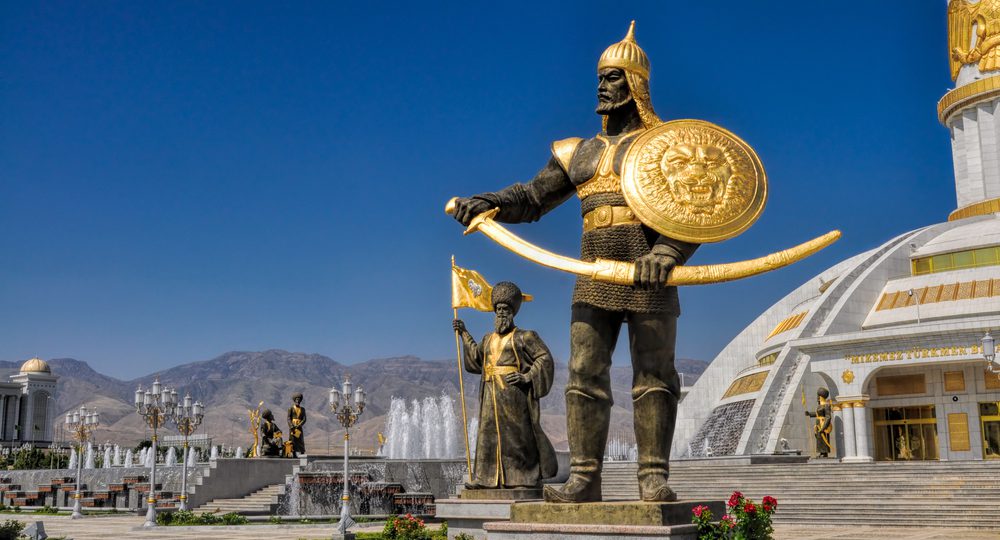Area And Boundaries
Area :
total : 488,100 km²
land : 469,930 km²
water : 18,170 km²
Area – Comparative : Slightly Larger Than California
Land boundaries :
total : 3,736 km
border countries : Afghanistan 744 km, Iran 992 km, Kazakhstan 379 km, Uzbekistan 1,621 km
Coastline : 0 km
Note: Turkmenistan borders the Caspian Sea. Its coastline with the Caspian Sea is 1,768 km.
Maritime claims :
none (landlocked)
Resources
Natural resources : petroleum, natural gas, sulfur, salt
Land use :
arable land : 3.89%
permanent crops : 0.12%
other : 95.98% (2011)
Irrigated land : 19,910 km² (2006)
Total renewable water resources : 24.77 km2 (2011)
Elevation extremes :
lowest point : Akjagaýa Depression
Turkmenistan, –81 m
highest point : Aýrybaba, 3,139 m
Weather and climate
The lowest temperature recorded in the region is minus 32 degrees as measured in the winter days and the highest temperature recorded has reached up to 50 degrees during the summer months.
In spite of the harsh day temperatures during the summers, the nighttime temperatures vary between minus 18 degrees to 14 degrees on some days. This causes an overall fluctuation of 30 degrees in the temperatures along the day. This is the cause of the diurnal temperature backdrop in Turkmenistan.
It hardly ever rains in Turkmenistan. The average precipitation rate is 80mm in a year and sometimes reaches up to 300-400 mm during the winters. Snow and rainfall are common in the months of December to March when the temperature goes below zero degrees.
Rest of the year is comparatively drier, cloudless and clear. While travelling to Turkmenistan do not forget to carry a pair of sunglasses along with sunscreen and headdresses to avoid sunburns.
Country borders
Longest border is with the Caspian Sea (1,786 km).
The other borders are with Iran (to the south, 992 km)
Afghanistan (to the south, 744 km)
Uzbekistan (to the north and east, 1,621 km)
Kazakhstan (to the north, 379 km)
Turkmenistan’s hydrological conditions
Its main rivers are located only in the southern and eastern peripheries.
The most important river is the Amu Darya-2,540 km long ( the longest river in Central Asia)
Other major rivers are –
Tejen 1,124 km long
Murgab 852 km long
Atrek 660 km long
Plant and animal life
Dag, wild grapes, almonds, figs, and walnuts are found all over Turkmenistan, while juniper and pistachio trees grow only on the open slopes of the country. On the riverbanks stand dense, floodplain forests of willow, reed, black poplar and cane.
Home to tortoises, goats, cheetahs, lynx, foxes, wildcats, gazelles, snow leopards, and porcupines, jackals, wild boars and the rare pink deer.
Vast flocks of ducks, geese, and swans make the Caspian Sea their winter home.
Call us or visit our website to learn more about Turkmenistan geography and to book your tickets now.

